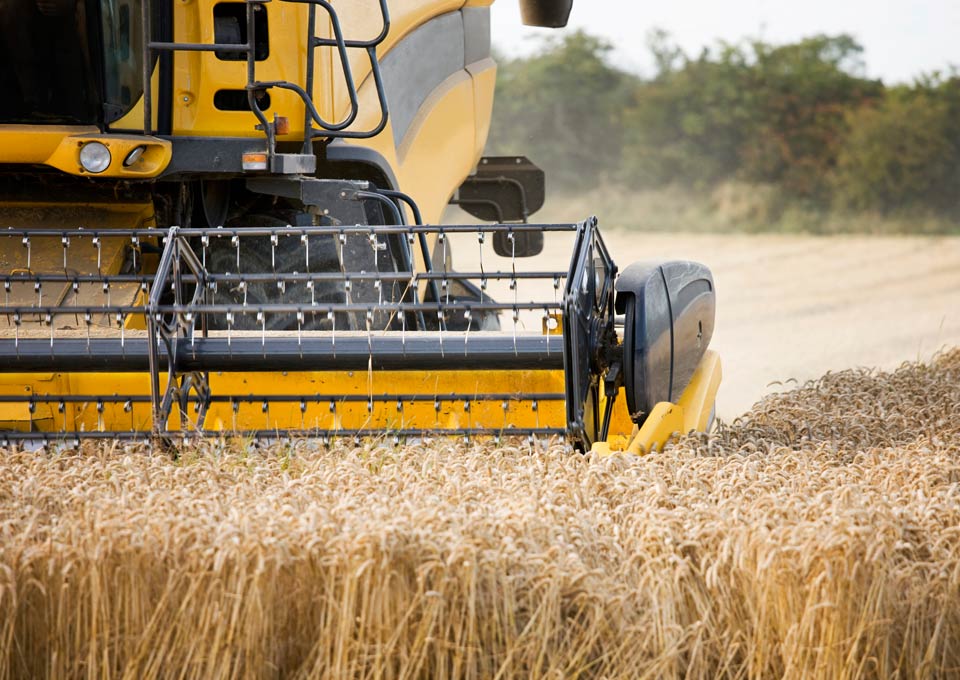According to a Future Market Insights (FMI) report, the global agricultural lubricant market value is expected to increase from US$ 484.1 Million in 2023 to US$ 826.7 Million by 2033. Over the forecast period, global agricultural lubricant demand is poised to surge at a CAGR of 5.5%.
Several factors are expected to drive the growth of the agricultural lubricant market during the assessment period. These include:
- Rapid expansion of the agriculture sector
- Growing trend toward mechanized farming practices
- Favorable government policies and initiatives for supporting farmers
- Increasing need for regular maintenance of agricultural equipment
- Rising popularity of bio-based agricultural lubricants
Agricultural lubricants are essential for improving the efficiency and longevity of farming equipment, ranging from tractors to harvesters. They have the ability to reduce friction and wear & tear of machine components.
The growing adoption of advanced agricultural equipment due to the rise in farm mechanization is expected to drive demand for agricultural lubricants. These lubricants have several uses, including keeping machinery from wearing out, lowering friction, and guaranteeing peak performance under a variety of demanding farming circumstances.
Farmers are realizing how crucial premium lubricants are for protecting their equipment as well as enhancing their performance. As a result, they are spending rigorously on agricultural lubricants like gear oils, hydraulic fluids, and engine oils.
Get an overview of market drivers and challenges affecting this industry! https://www.futuremarketinsights.com/reports/sample/rep-gb-17863
Agricultural lubricant demand will also rise steadily due to precision farming methods and the development of modern farming technologies. This is because precision farming operations place an even greater demand on reliable and efficient lubrication.
The agricultural lubricant business is now significantly influenced by sustainability and environmental concerns. The need for bio-based lubricants made from renewable resources is rising as farmers and other agricultural enterprises work to lessen their environmental effects.
Key Takeaways from the Report:
- The global market for agricultural lubricants is projected to expand at a 5.5% CAGR through 2033.
- By base oil, the mineral oil segment is expected to total a valuation of US$ 226.9 Million by 2033.
- By application, the tractor segment is set to hold a market share of 26.7% in 2023.
- East Asia is expected to account for a significant share of about 30.9% in 2033.
- Sales in the United States are projected to total US$ 94.9 Million by 2033.
- China is projected to attain a valuation of US$ 152.7 Million by 2033.
- Demand in India is predicted to rise at 5.0% CAGR through 2033.
“Growing need for high-performance lubricants and adoption of farming mechanization is expected to boost the global agricultural lubricant industry. Farmers are using increasingly sophisticated agricultural machinery, which highlights the need for specialized lubricants to maximize equipment performance. Strict environmental laws are also pushing the sector toward eco-friendly formulas,” – opines Nikhil Kaitwade, Associate Vice President at Future Market Insights (FMI).
Who is Winning?
Top agricultural lubricant manufacturers profiled in the report include –
- ExxonMobil Corporation
- Quaker Chemical Corporation
- Fuchs Petrolub SE
- BP plc
- TotalEnergies SE
- Apar Industries Ltd.
- Calumet Specialty Products Partners, L.P.
- Chevron Corporation
- China Petroleum & Chemical Corp (Sinopec Corporation)
- Repsol SA
- Philips 66
- Raj Petro Specialities Pvt. Ltd
- Nynas AB
- Valvoline, Inc
- Shell plc.
- Savita Oil Technologies Ltd.
Key players are focusing on introducing new high-performance lubricants for agricultural applications. They also use strategies like mergers, acquisitions, partnerships, facility expansions, etc.
Stay ahead of the Competition – Purchase Your Premium Report for a Decisive Advantage! https://www.futuremarketinsights.com/checkout/17863
Recent Developments:
- In February 2021, Shell Global introduced a new range of carbon-neutral lubricant products.
More Insights into the Report:
In its latest report, Future Market Insights (FMI) offers an unbiased analysis of the global agricultural lubricant market, providing historical data from 2018 to 2022 and forecast statistics for the period 2023 to 2033. To understand the global market potential, growth, and scope, the market is segmented based on product type, base oil, application, and region.
Agricultural Lubricant Market Segmentation Analysis:
By Product Type:
- Engine Oil
- Transmission Fluids
- Hydraulic Fluid
- Gear Oil
- Grease
- Other Lubricants
By Application:
- Tractor
- Harvester
- Combine
- Irrigation Systems
- Tillage Equipment
- Seeders and planters
- Other Equipment
By Base Oil:
- Mineral Oil
- Synthetic Oil
- Bio-based Oil
By Region:
- North America
- Latin America
- Western Europe
- Eastern Europe
- East Asia
- South Asia & Pacific
- Middle East & Africa
About Future Market Insights (FMI)
Future Market Insights, Inc. (ESOMAR certified, recipient of the Stevie Award, and a member of the Greater New York Chamber of Commerce) offers profound insights into the driving factors that are boosting demand in the market. FMI stands as the leading global provider of market intelligence, advisory services, consulting, and events for the Packaging, Food and Beverage, Consumer Technology, Healthcare, Industrial, and Chemicals markets. With a vast team of over 400 analysts worldwide, FMI provides global, regional, and local expertise on diverse domains and industry trends across more than 110 countries.
Contact Us:
Nandini Singh Sawlani
Future Market Insights Inc.
Christiana Corporate, 200 Continental Drive,
Suite 401, Newark, Delaware – 19713, USA
T: +1-845-579-5705
For Sales Enquiries: sales@futuremarketinsights.com
Website: https://www.futuremarketinsights.com
LinkedIn| Twitter| Blogs | YouTube
